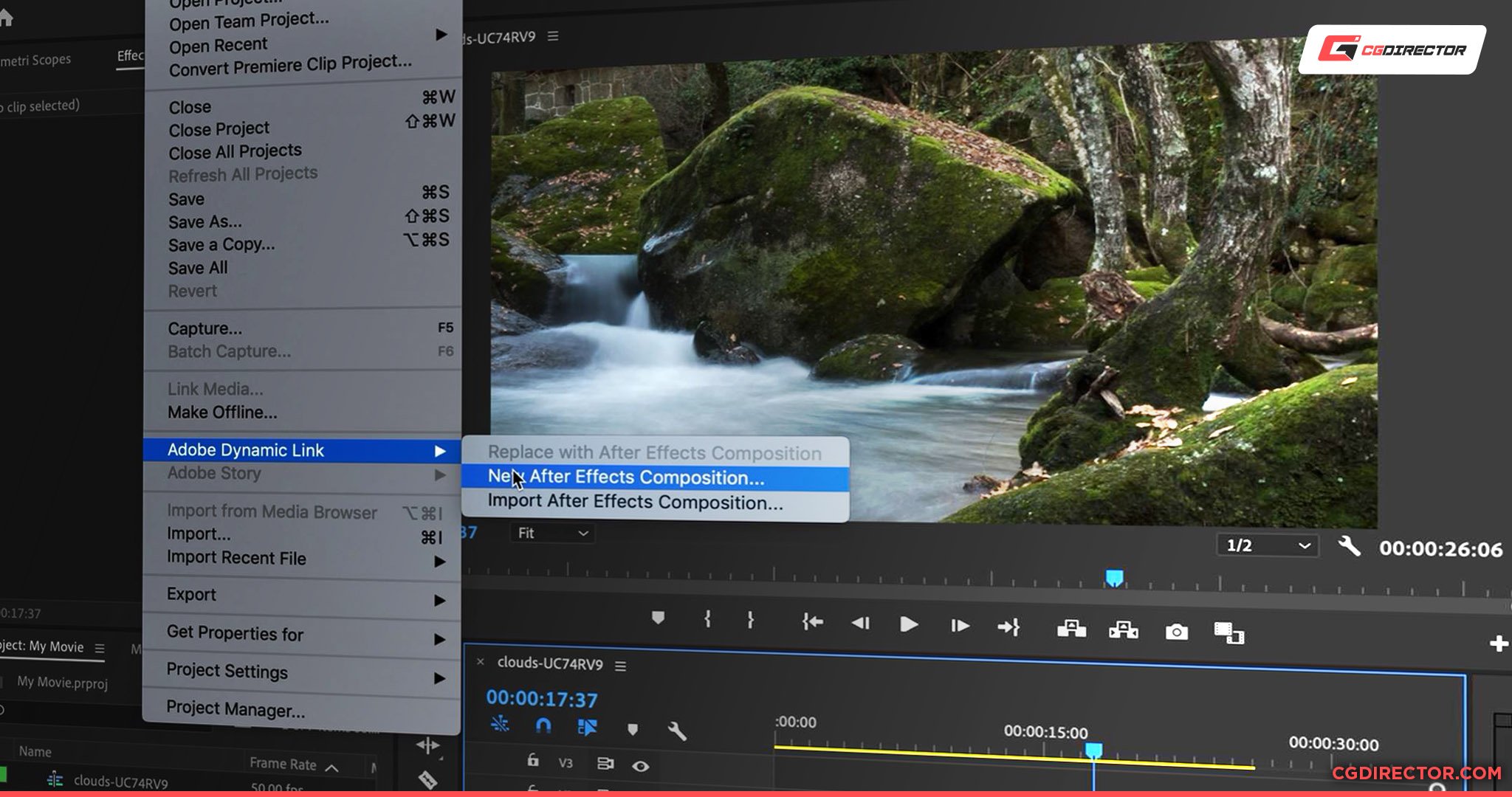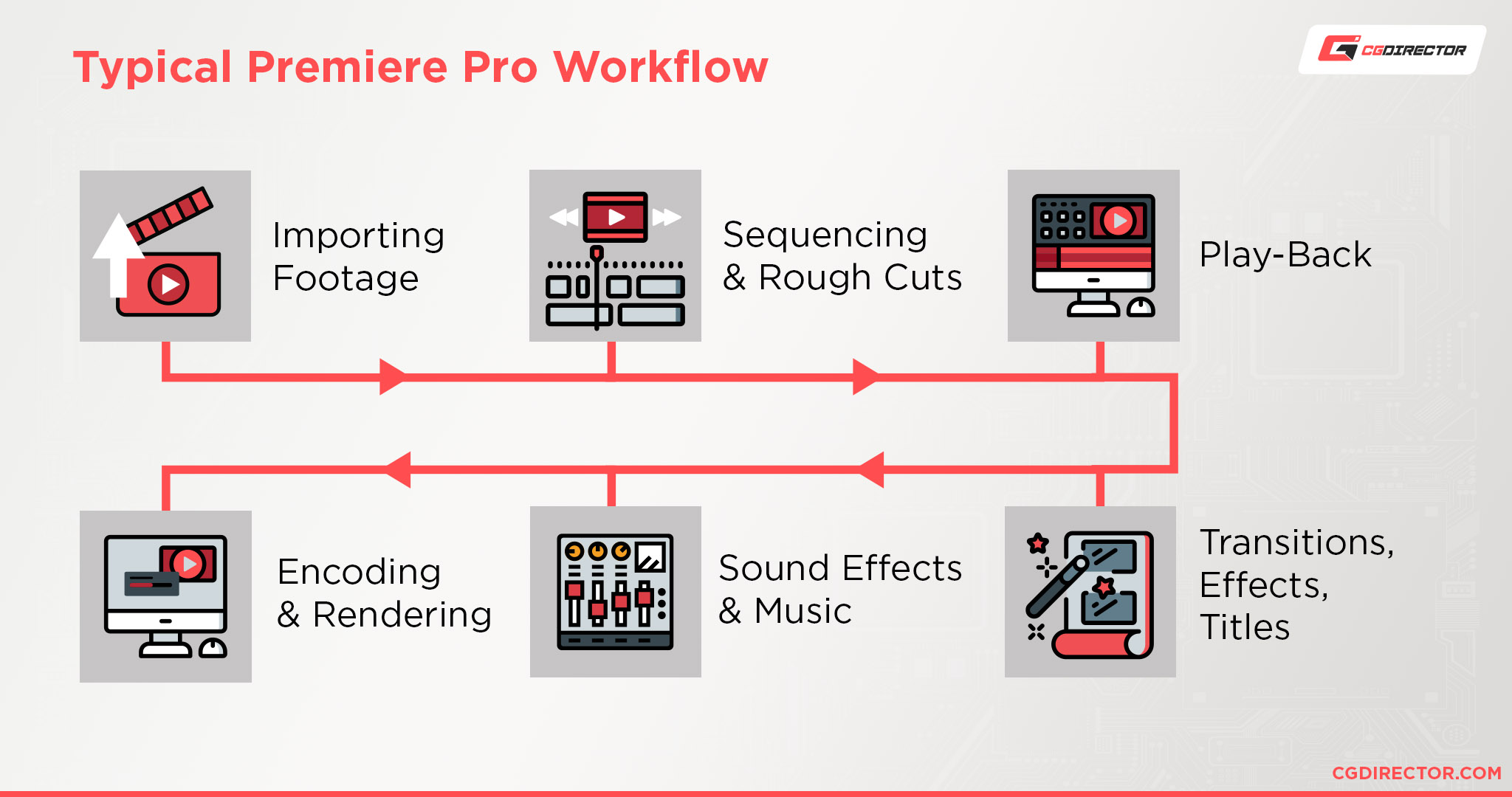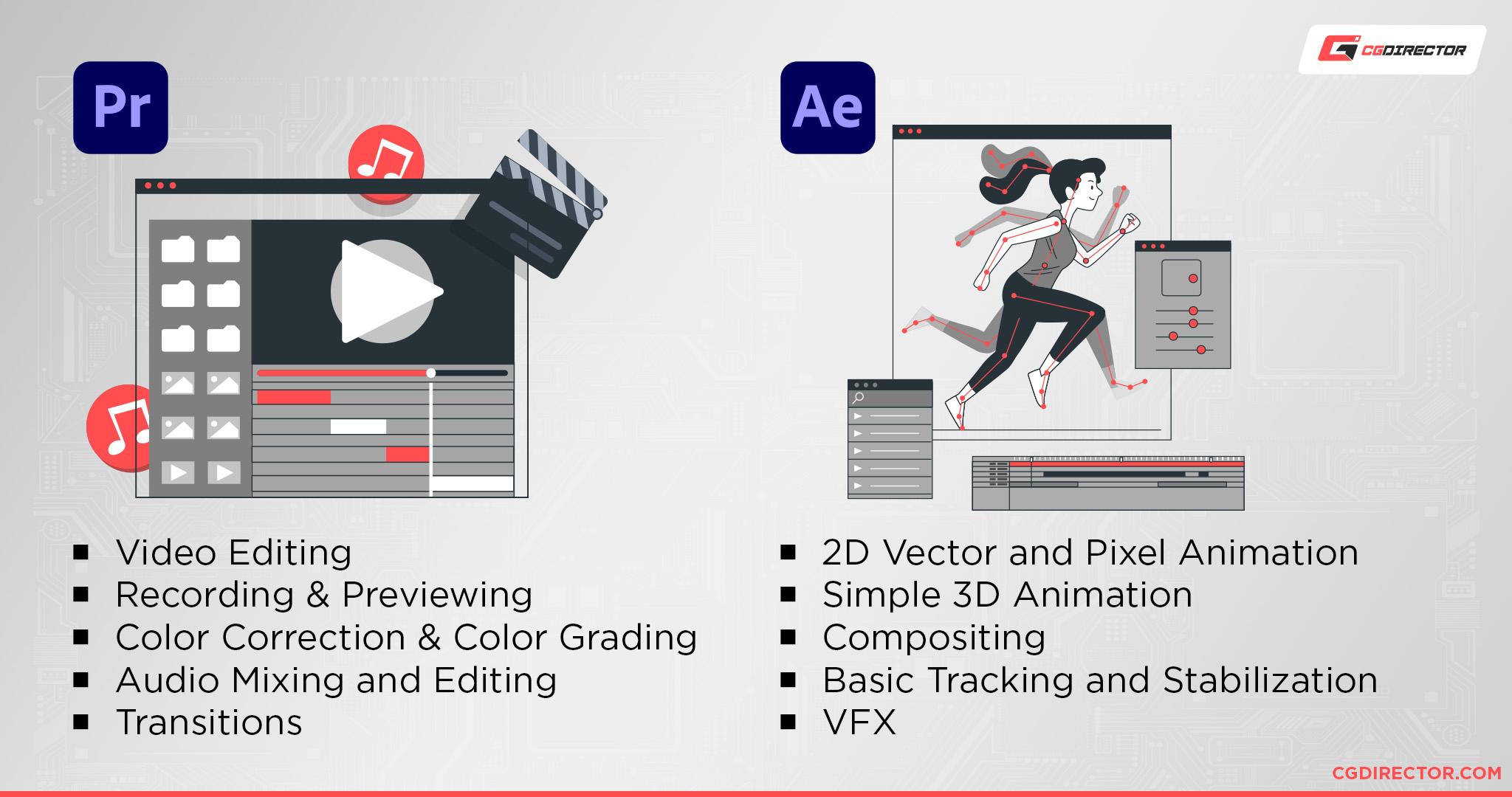After Affects or Premiere Pro for Video Editing
I am a Motion Designer and Video Editor (in addition to some other things I do) and hop in and out of After Effects and Premiere Pro multiple times throughout a typical workday.
And there's one question that I often hear, either in the comments under my Articles or from colleagues, and that is:
After Effects or Premiere Pro?
I default to putting on my thinking cap when I hear that question.
Not because I don't know the answer, but rather because I don't know the intent of who asked the question.
So I ask a couple of questions in return to hone in on what is being expected of my answer.
- Are you a beginner?
- What do you want to do with the program?
You see, After Effects and Premiere Pro can do a lot of similar things.
You can probably do everything in one way or another in both Applications.
So I understand why the question comes up a lot of times.
But the truth is, both After Effects and Premiere Pro are made for very specific tasks.
And both Applications excel in the tasks they were made for.
Think of it this way – If I ask you: "F1 Car or SUV?".
Well, they are both cars that'll bring you from one point to another.
But efficiency changes dramatically when I want to pick up my Family. Or not get wet in the rain.
After Effects and Premiere Pro are much the same.
Both can do about the same things, but it'll take you painfully long to do things in Premiere Pro or After Effects, that they were not made for . It'll give you a headache.
So to summarize this first section.
The question is legitimate, and the answer depends on what you want to achieve and how you want to achieve it .
Why not use both?
Dynamic Link to our rescue!
Well… If you value efficiency and not getting a headache, chances are you'll want to steer clear of Dynamic Link.

Some Features make sense logically and on paper, but just don't seem to work well in the real world, especially when projects become complex and one eye keeps twitching towards that ever-closer-creeping deadline.
Every Software has such features (just look at Cinema 4D's XREFs) that look great for marketing purposes and they might hold up for simple tasks, but Dynamic Link, too, falls apart when it counts.
Many times when I use it and things just don't render or the sync doesn't work, or the link crashed yet again, I go and manually export my AE Comps or Premiere Pro Edits to Image Sequences. This works every time.
So, use both, but without dynamic link?
We're getting closer:
In a perfect world, you'd use each tool for its intended purpose (what it does best), but that now means you have to learn two Applications (if you're a beginner).
So here's my answer to whether you should use both:
- Use only one of the two if you're a beginner. Which one that is I'll get into a bit further down.
- Use both with dynamic Link if you're a professional and you are working on simple projects.
- Use both with manual exporting to an intermediary format and without dynamic link if you're a professional and working on complex, time-sensitive projects.
A direct comparison of After Effects and Premiere Pro doesn't make sense
So to recap, as a beginner you should either use just After Effects or just Premiere Pro and as a professional, you should use both but each for the tasks they are meant for – Because they are specialty tools that can each do some things really well.
That just leaves us with one question to answer.
What are After Effects and Premiere Pro made for? What do they excel at?
How do After Effects and Premiere Pro work together?
When you use After Effects and Premiere Pro both in a Pipeline, the order of usage is usually like this:
- After Effects for the little, intricate, detailed, creative stuff
- Then Premiere Pro to collect everything and finish up the project
A metaphorical comparison of the two would go a bit like this:
Think of a car assembly line. You have the chassis, the wheels, then the motor is put in, then the doors, and then the finished car is rolled out onto the lot.
Well, that's pretty much Premiere Pro's job. It takes all the finished parts and assembles them.
But who builds all the parts? The chassis has to be welded, the wheels polished, the motor moulded.
That's After Effect's job.
What is After Effects made for?
Adobe After Effects is made to generate Assets and do fine-grained manipulation of existing footage.
Its main strengths are in areas such as:
- 2D Vector and Pixel Animation
- Simple 3D Animation
- Motion Design and Title Animations
- Compositing
- Masking
- Basic Tracking and Stabilization
- Retouching
- VFX
What should you use After Effects for?
Now, many beginners might not be familiar with the terms above, so I'll give some examples of projects you would create with After Effects and not Premiere Pro – For efficiency and ease of mind.
You want to:
- Create 2D Vector Animation of simple characters that you have created in Adobe Illustrator
- Create a 3D Logo for your startup with fancy glow and reflections
- Create professional-looking Text-Animations for your Movie or Demo Reel
- Composite some Renderpasses (e.g. EXR) that you output from a 3D Render Engine
- Get rid of the background in moving media
- Stabilize a drone Video and get rid of noise
- Do a sky replacement on some footage
- Add a stock Video explosion or some simple particle Effects to your Home-Video
As you can glean from the examples above, in After Effects you tend to work on rather detailed elements of a project.
So detailed in fact, that it has its own scripting language (Expressions) that adds an entirely new level to the amount of control you have over your creations.
To pull all your creative endeavors together into a finished masterpiece you'll need a different specialty Software: Premiere Pro.
What is Premiere Pro made for?
Adobe Premiere Pro is made to collect already created assets and mix them with audio on a timeline to realize the story you want to tell.
Its main strengths are in areas such as:
- Video Editing, Recording & Previewing
- Color Correction & Color Grading
- Audio Mixing and Editing
- Transitions
What should you use Premiere Pro for?
Adobe Premiere Pro is a classic Video Editing Software and it's an industry standard.
Its User Interface shows us at first glance that it is meant to be used for stringing finished assets together in an efficient manner.
Here's what you would use Premiere Pro for:
- Transfer, record and convert live-action Footage from your Cameras
- Balance the coloring, contrast, and brightness in your footage. Give it a warm (romantic) or cold (horror) look & feel
- Touch up your Audio-Tracks and add background music, Sound Effects or Voice-Over
- Add transitions & simple titles to your 30s TVC

If After Effects is for creating assets and working on intricate details, Premiere Pro is for having a birds-eye view over your project.
You work with premade building blocks that you string together to create a finished product.
Premiere Pro vs. After Effects – which is best for beginners?
If you're a beginner that wants to see if flowing creatives juices are your thing, pick the easier tool of the two.
Premiere Pro is much more accessible and easier to learn.
And after learning Premiere Pro, or even just 20% of its feature set, you'll also have a much easier time diving into After Effects if you decide to stick with it.
After Effects can be overwhelming at first, but of course you can do a lot more with it, especially if you have no footage to work with.
After Effects is made to create something from nothing.
If you absolutely know you want to create something like a 2D Animated Character or a 3D Logo, then by all means give After Effects a go from the start.
If you're just looking to see if the world of Motion is for you, though, and you're just tinkering, I'd recommend starting with the easier tool, Premiere Pro.
Conclusion
Both After Effects and Premiere Pro can do similar things, but After Effects is much faster at creating assets such as 2D Animations, and Premiere Pro is much faster for editing Videos.

If you are a beginner, try out Premiere Pro as it's much easier to get a grip on, and if you like the world of visual storytelling, you can give After Effects a go for more fine-grained asset creation.
In the end, professionals will know that it can be faster to use just one tool for specific kinds of projects because switching between tools takes time too and introduces an additional layer of complexity.
Anything that saves you time, be it a fast PC for After Effects or Video Editing, or just the optimization of your time within your workflow will make you more competitive.
I often edit videos in After Effects, because the project is just too small to warrant dynamic links or exporting my comps to Premiere Pro.
Or I do some Text Effects and stabilization in Premiere Pro because the Client is just not paying me enough to warrant unpacking my After Effects skills.
I also do extensive research into how I can re-enable features such as exporting MP4 Files from After Effects after Adobe took it away from us, just to save some precious minutes here and there…
But that's just me.
FAQ
Is After Effects good for Video Editing?
After Effects isn't made for Video Editing.
While you can edit Videos in After Effects, it'll take you longer and be more complex than using a tool made for Video Editing, such as Premiere Pro.
Should I use After Effects or Premiere Pro?
This depends entirely on what you want to do.
Do you have a bunch of footage that you want to edit into a finished Video? Use Premiere Pro.
Do you want to create something new, like 2D Animations or a 3D Logo? Use After Effects
What is the difference between After Effects and Premiere Pro?
Premiere Pro is made for collecting and stringing together assets while After Effects is made to create assets and manipulate footage on a more detailed level.
Which is better, Premiere or After Effects?
Because each tool is made for a different purpose, a comparison doesn't make sense.
You can do similar things in both tools, but each tool will be faster for tasks it was specifically made for.
Over to you
When and for what do you use After Effects or Premiere Pro? Let me know in the comments or our forum.
After Affects or Premiere Pro for Video Editing
Source: https://www.cgdirector.com/after-effects-vs-premiere-pro/
0 Response to "After Affects or Premiere Pro for Video Editing"
Post a Comment